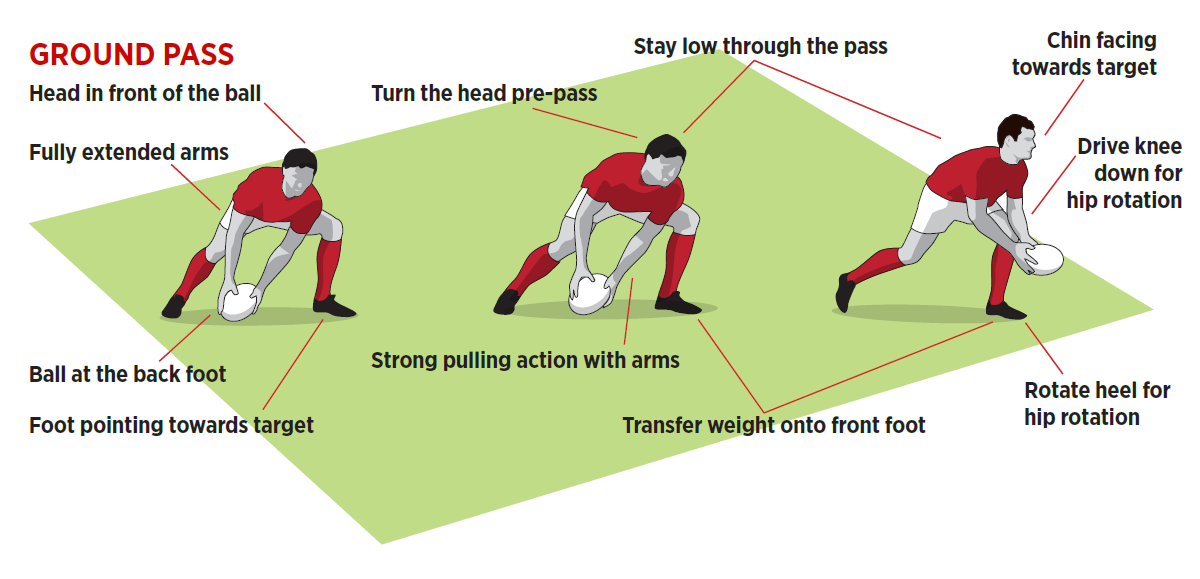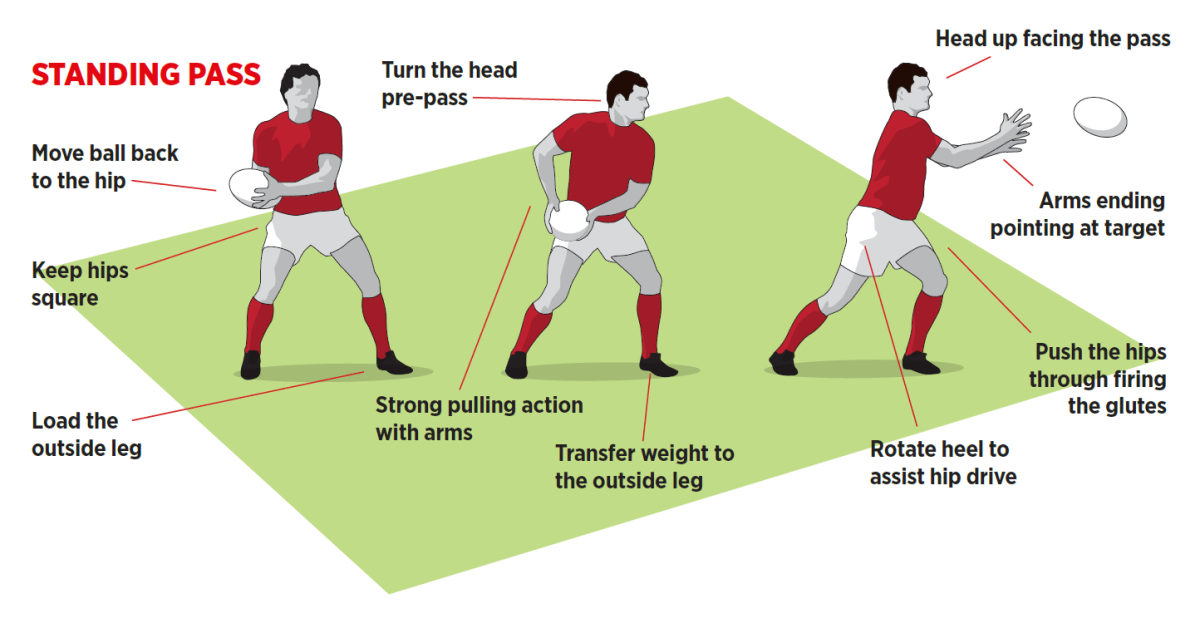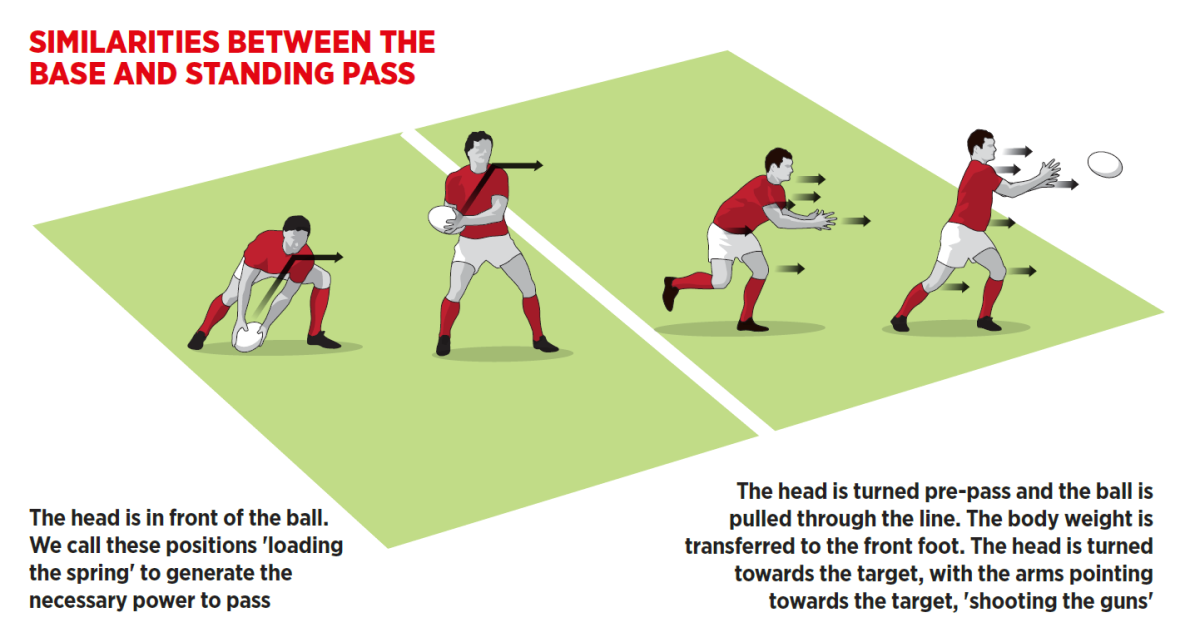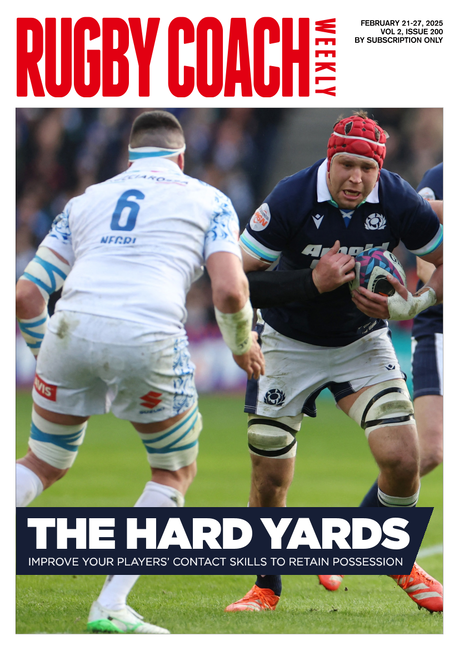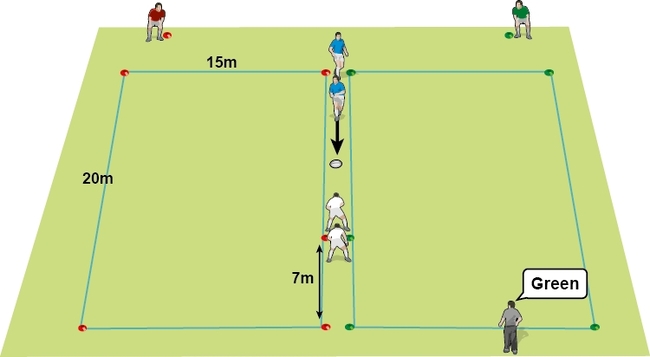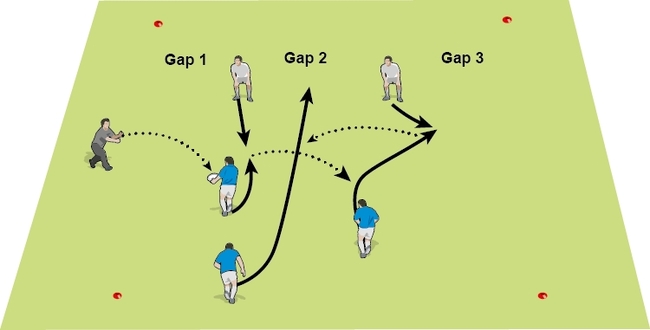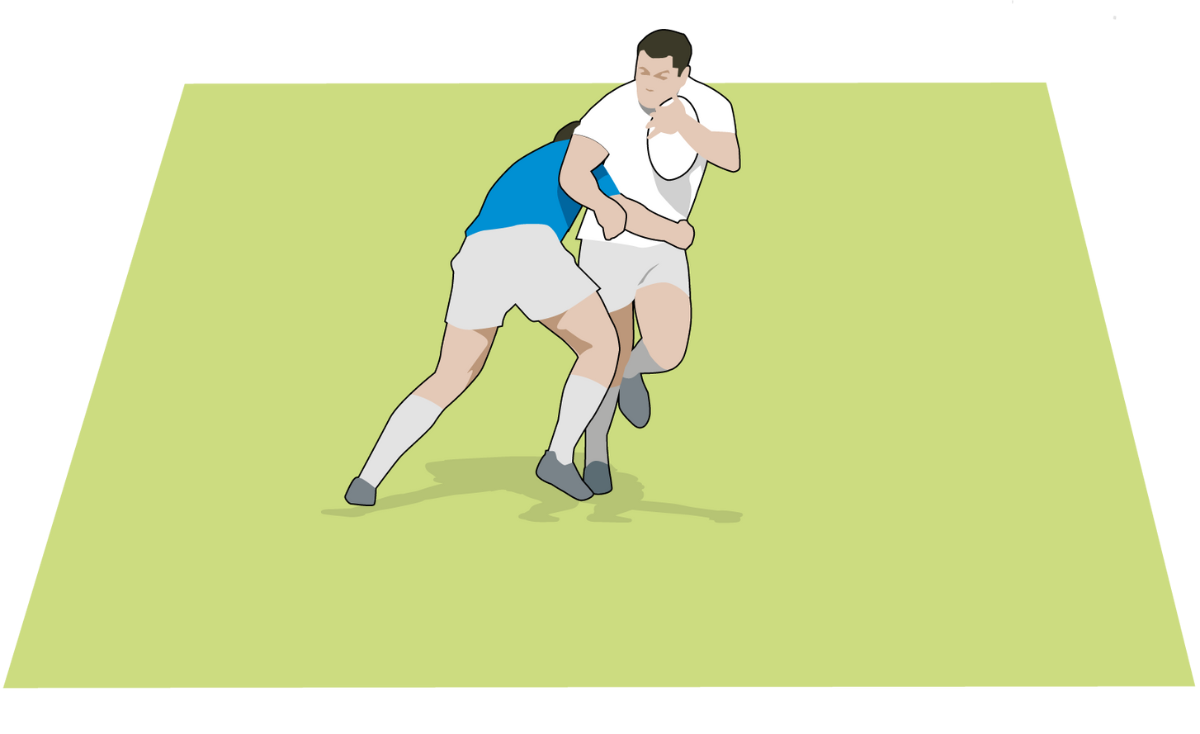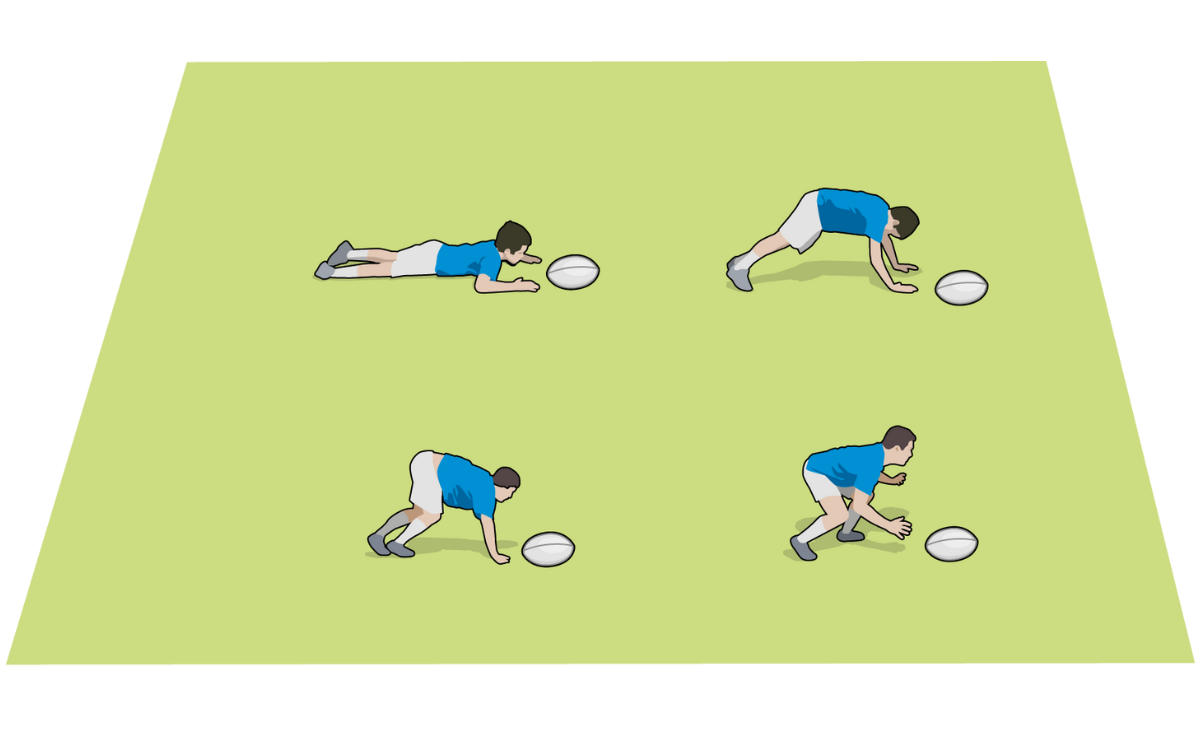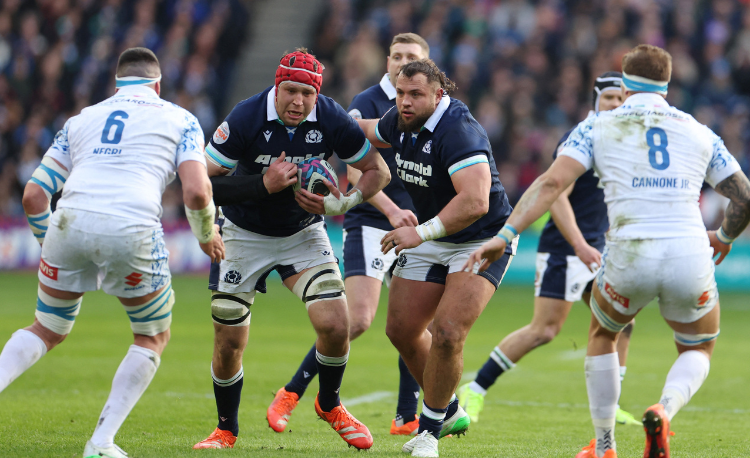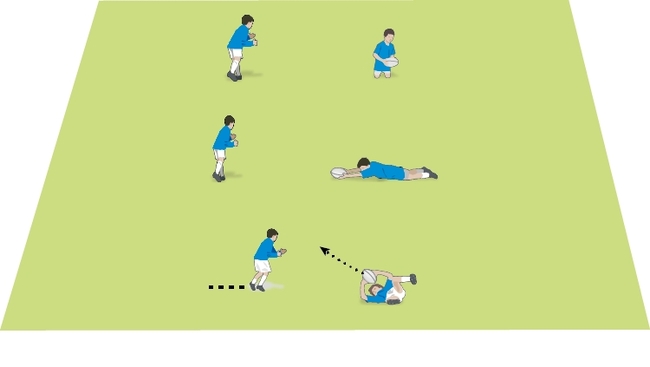More powerful ground and standing passes
Ex-scrum-half and RugbyIQ founder GREG COMMINS breaks down key skills.
When working on the pass, it is important to have the correct hand placement on the ball.
The back hand is the ’trigger’, which generates most of the power; the front hand is mainly used to steer the pass, and shouldn’t try to influence the pass too much. Its job is to stabilise the flight of the pass and assist with ball rotation.
The range of motion for the back arm is far greater than the front. It moves almost twice as much. The back arm, therefore, is the main driving force.
Passing activities
Correct passing mechanics will ensure the player is set to deliver the pass, but they will not guarantee it arrives at the target.
Accuracy is fine-tuned through repetitive static (standing or kneeling) and dynamic (moving) passing drills, with targets.
Passing practice without a target can develop inaccurate habits, as the eyes will not focus on a destination and the passer will launch the ball into space, hoping they land in front of the receiver.
Ideally, another player is best as a target, but those on walls or the posts can be used instead.
Comparing the passes
When the two passes are placed next to each other, you will be able to see the common movement patterns.
The head is in front of the ball, which gives the feeling of loading the spring. It is turned before the pass, and weight is then transferred to the front foot, with a finish position of hands ’shooting the guns’ towards the target.
This means the passer’s hands should point at the target at the end of the pass. Move through the pass, as this will make it easier to stay low and create good pass trajectory.
Related Files
Newsletter Sign Up
Coaches Testimonials

Gerald Kearney, Downtown Las Vegas Soccer Club

Paul Butler, Florida, USA

Rick Shields, Springboro, USA

Tony Green, Pierrefonds Titans, Quebec, Canada
Subscribe Today
Be a more effective, more successful rugby coach
In a recent survey 89% of subscribers said Rugby Coach Weekly makes them more confident, 91% said Rugby Coach Weekly makes them a more effective coach and 93% said Rugby Coach Weekly makes them more inspired.
Get Weekly Inspiration
All the latest techniques and approaches
Rugby Coach Weekly offers proven and easy to use rugby drills, coaching sessions, practice plans, small-sided games, warm-ups, training tips and advice.
We've been at the cutting edge of rugby coaching since we launched in 2005, creating resources for the grassroots youth coach, following best practice from around the world and insights from the professional game.
